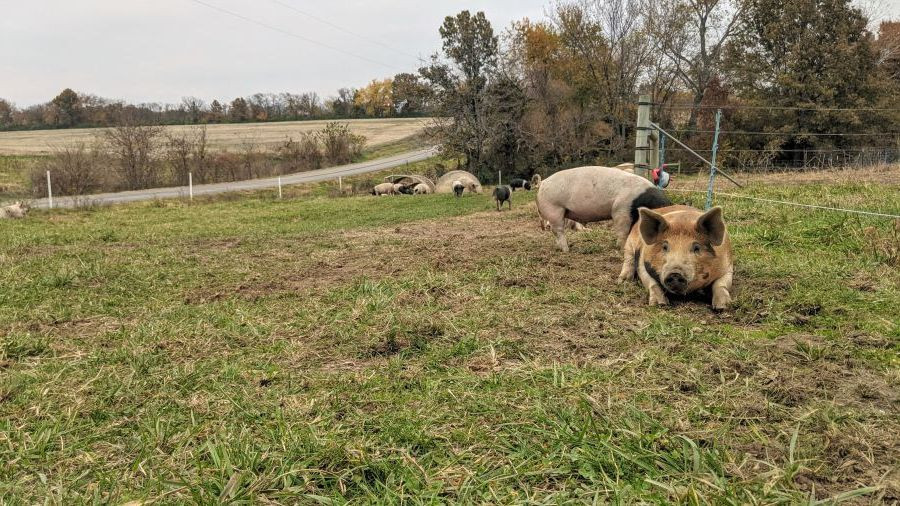Fighting the Cold and Flu Virus
posted on
January 17, 2017
One of our loving customers from Lee’s Summit, Missouri, wrote this article. Christi is a mom of 3 and home chef.
It’s cold and flu season, and it seems like everyone has been catching something this year. I got it before Christmas, and it knocked me out for a week which made me think long and hard about how to naturally fight viruses. There are over 200 different viruses that can cause the common cold or influenza, and it’s important to know the difference when you are sick. The common cold typically presents as congestion, cough, sore throat, and sneezing, with general lousiness about a week-long; however, it can develop into bronchitis, ear infection, or sinus infections. Influenza is a much more serious illness with similar symptoms plus extra pain, fever, and fatigue. A normal healthy adult will catch, on average, two colds per year. Children tend to catch more colds because their immune systems are still immature, and they haven’t developed immunity to the most common viruses. It’s important to remember that being “healthy” doesn’t imply we no longer get sick. An out-of-balance immune system can be overly active, fighting and preventing you from appearing “sick” even though you’re not healthy. A sign of health is to occasionally catch a cold and recover quickly with minor symptoms. A healthy diet, in the first place, will ensure a fast recovery, but if you get the flu, there is plenty of information about naturally fighting it through nutrition and natural foods. While there are a large variety of supplements and herbs that can help you feel better (besides the OTC pills), I want to focus on what you probably already have right in your kitchen. One of the simplest ways to help yourself fight a virus is soothing tea and broth. If you are suffering from the common cold and not influenza, chances are you feel well enough to be up and about and will be eating meals, even if they are small. Load your plate with foods rich in vitamin A to fight inflammation. Sweet potatoes, carrots, and dark greens are all good choices here, and for a lift in the morning, choose cantaloupe or mangos. If you are suffering from head congestion, sprinkle in a little cayenne pepper to keep mucus flowing, or squeeze a bit of lemon juice in a smoothie. If you consume dairy products, now is a good time to abstain since dairy produces mucus. There are numerous ways to boost our immune systems through the foods we eat, in particular by consuming lots of vitamin C-rich foods. In addition to citrus fruits, choose kiwi or strawberries for a dose of immune-boosting vitamin C. Tomatoes and bell peppers are also great sources of vitamin C. Combine the multiple virus-fighting benefits yourself in one meal by eating lots of dark green veggies, most of which are great sources of both vitamin A and C. Garlic and shiitake mushrooms are both well known for their healing properties and immune system boosting. Does this list of foods sound a bit disjointed and unappetizing? Try a mango and strawberry smoothie in the morning for a great kick start of vitamins C and A, and squeeze a bit of lemon juice in for its mucus thinning properties. How about a plate of quick marinara sauce on pasta with lots of extra garlic and a shake of cayenne pepper over the top? Need a snack? Bake up some tasty kale chips or toss together a spinach salad with a lemon vinaigrette and fresh strawberries. Sometimes with the flu, you can’t get out of bed or hold down food, so while you rest and sleep, enhance your immune response with little doses of therapeutic liquids. Good hydration makes for the quickest recovery. Green tea is a great choice when you are feeling down in the dumps; add honey for a burst of sweetness and to soothe sore throats and coughs. Chicken soup is truly helpful for illness, as well as drinking bone broths (please see the last article on the great benefits of homemade bone broths and for a recipe). The minerals in broths restore your body’s nutrients, and the small amounts of protein and gelatin will help rebuild damaged cells. Another great body booster is ginger and making fresh ginger tea is a snap to make. You can fight through this cold and flu season with just your kitchen pantry. And pretty soon we will be enjoying springtime again and farm fresh foods at the market!
One of our loving customers, Christi H. of Lee's Summit, Missouri, wrote this article on fighting the flu and cold virus.



